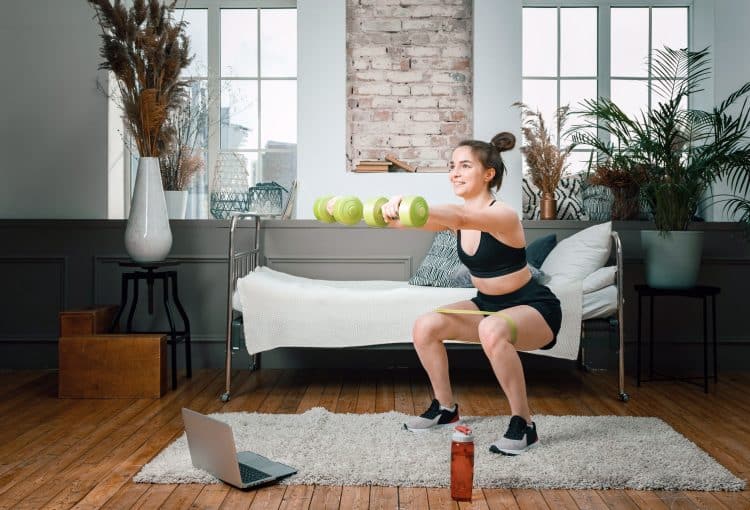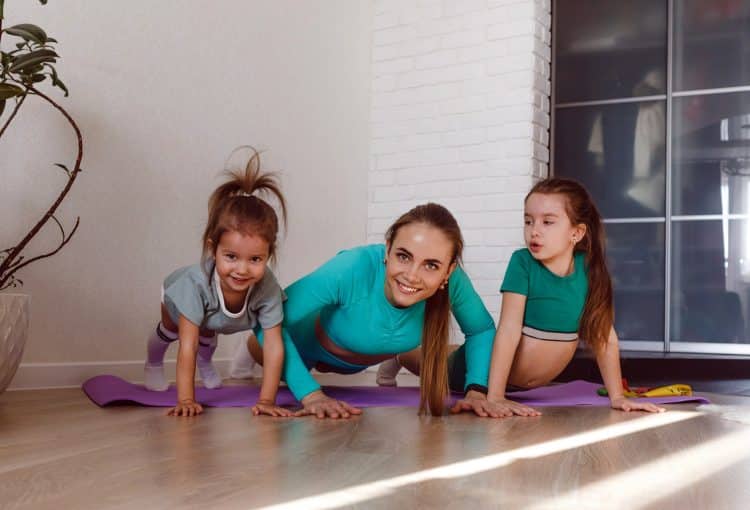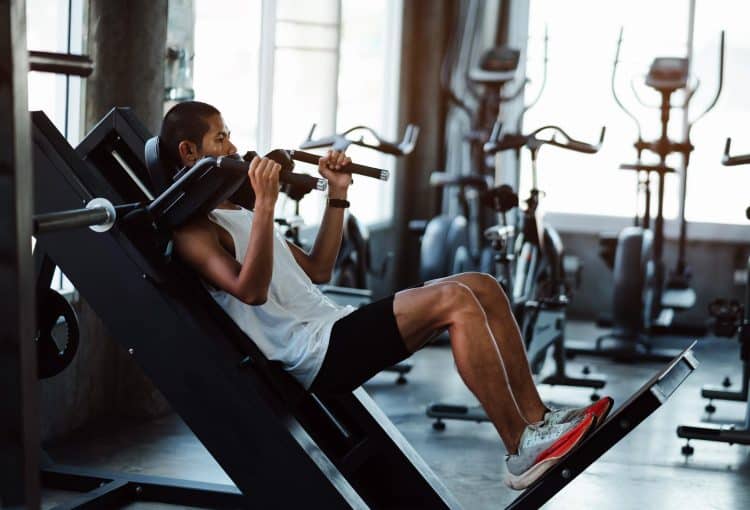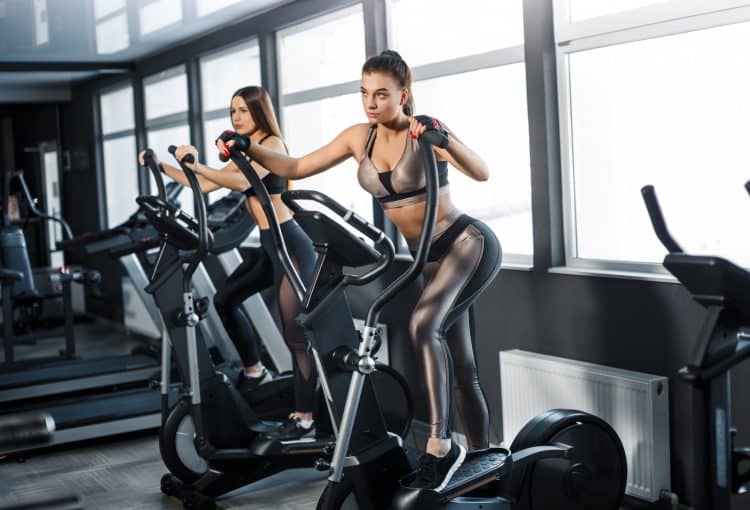Home or gym? It’s perhaps the most essential fitness decision you can make. Get it right and have the ideal environment to build your fitness journey. If you get it wrong, you’re likely to blow your workout ambitions before they even get established.
As a personal trainer, I work with people in both settings. That has given me some unique insights into the advantages and drawbacks of home gyms versus commercial settings and the types of people best suited to each environment.
In this article, I’ll lay out the pros and cons of home workouts vs. gym sessions and the types of people best suited to each. By the time you finish reading (in about 3 minutes), you’ll have a good idea of which best suits you: home or gym.
Factors To Consider — Home Workouts vs. Gym Sessions
Exercising at home has some obvious and some not so obvious, advantages over going to a commercial gym. Let’s break the pros and cons down:
Convenience

With a gym at home, you have your workouts on tap. You can train whenever you choose — and be into it in a matter of minutes. That is going to allow you to get your workout in more regularly.
Level Up Your Fitness: Join our 💪 strong community in Fitness Volt Newsletter. Get daily inspiration, expert-backed workouts, nutrition tips, the latest in strength sports, and the support you need to reach your goals. Subscribe for free!
As you know, consistency is one of the most critical factors in achieving your workout goals. You will miss far fewer workouts when your gym is a few steps away from your couch.
A gym at home is especially beneficial when you’ve got kids under five. Now, you can get in your training session while the baby is taking its afternoon nap (just make sure you have a baby monitor in the gym).
If you’ve got toddlers, you can set up a protected playpen area in the corner of the gym so you can keep an eye on the kids while exercising.
Imagine if you had to work out at a gym with toddlers. You’d either have to find a babysitter or, if the gym has a creche, bring the kids with you, trusting that the gym will look after them (good luck with that).
A home gym allows you to work out when you’ve only got a few minutes. In less time than driving to a commercial gym, you can get in a deltoid-scorching shoulder session or a calorie-burning HIIT blast.
Exercise Commitment
When you have a home gym, you will become more resolved to work out more often. For one thing, there is the practical fact that you have spent a lot of time and money on setting up the gym, so you feel an inner obligation to make the most out of it — in other words, you feel guilty. If you didn’t use it to the full, you would be selfishly wasting money that could otherwise be used for the benefit of your family!
In my opinion, there’s nothing wrong with that sort of guilt — if it gets you working out more regularly, then it’s got to be a good thing.
Workout Efficiency
If you are a working person with a day job, you will probably find yourself going to the gym before or after work — just like everybody else who works a 9 to 5. That makes for a crowded gym. And that makes for a frustrating and ineffective workout.
Regardless of whether you are intent on losing body fat or building muscle, the tempo of your workout is critical. Your rest between sets needs to be carefully monitored and goes from no time at all if you are super setting to 3 minutes if you are doing heavy power training. But when you have to wait around for equipment, all of that rest time monitoring goes out the window.
You’ll likely find yourself waiting for others to finish with a machine, bench, or dumbbell. Then there are the clowns who sit around on gear playing with their phones (don’t get me started on that one!) The bottom line is that the quality of your workout will be compromised.
Even worse than wrecking your between set rest, when you hit the gym at peak time, it’s a good bet that you aren’t even able to follow your prescribed exercise order. You’ve simply got to make the best use of what is available. If you take your training seriously, that is not how you want to roll.
Now compare all of that to training at home. You will never have to wait for equipment. That puts you in total control of your workout tempo and your exercise order. That considerable advantage will translate into more effective workouts and better gains!
Check out our home gym essentials equipment guide.
Health & Safety
Gyms are notoriously unhealthy environments. It’s hardly surprising. Hundreds of people march in and out of them every day.
While there, they will sweat, grunt, and sometimes puke. That creates a breeding ground for bacteria. The gym floor bench is covered in sweat, bars, and machine handles.
Think again if you think you can go to the gym changing rooms to clean off all that bacteria. Research indicates that the change rooms are the dirtiest place in the facility. So, going to the gym can actually rob you of your health!
A 2021 study out of Baton Rouge, Louisiana, saw researchers taking swabs from three local fitness centers and testing them for WHO-priority pathogens. Swabbed equipment included barbells, dumbbells, benches, and chest fly machines. They found pathogen levels that were much higher than in previous studies. Posing a substantial health risk. [1]
Working out at home puts you in total control. The fact that far fewer people will be using it automatically makes it less prone to bacteria buildup. And, even if it does attract bugs, you have total control over keeping the place clean and hygienic.
Family Exercise
You are making a statement when you have a gym in your home. You care a lot about your health and well-being. Your family, including your kids, will hear that message clearly.
With children spending so much time online, having a home gym is an essential way that you can set the right example for them. Who knows, you may even coax them into an exercise program of their own (or at least get them to spot you when you’re benching).
Money Saving
To appreciate the money-saving potential of a home gym, you need to get out of the immediate cost mentality and think about the long-term investment benefits. You will pay a substantial amount upfront but will be in credit over time.
You will pay between $1,000 and $1,500 for a primary home gym set-up. Then, apart from any maintenance and wear or tear costs, you’re done. Of course, you can and probably will keep adding gear as the years progress, so let’s say that over the first five years of the life of the gym, you add $1,000 worth of extra equipment. You’ve now spent a max of $2,500 on your home gym.
According to a research, the average cost of a gym membership in the United States, when you account for join-up fees and monthly costs, is just under $800. That’s $4,000 over five years.
Some simple math tells us that the home gym guy is up by $1,500 already. If he sends another $2,000 on gear in the following five years, he will be ahead by $3,500 at the end of 10 years.
But there’s more to the dollar savings picture than that. At the end of 10 years the commercial gym goer has nothing materially to show for his $8,000 investment.
But the home gymer has a room filled with equipment he can hang onto or sell. Throw in 10 years of fuel savings from not having to drive to the gym, and it’s a no-brainer — home gym training makes the better financial sense.
Total Control
When you go to a commercial gym, you are at the mercy of the people in charge. They dictate what type of music is playing, along with the general mood and atmosphere that prevails. Sometimes, that atmosphere gels perfectly with your training mindset — and sometimes, it doesn’t.
But when you train at home, there’s no taking chances. That’s because YOU are in charge. You can choose the music, the volume, and the training atmosphere. That considerable advantage can often either make or break your workout.
Level Up Your Fitness: Join our 💪 strong community in Fitness Volt Newsletter. Get daily inspiration, expert-backed workouts, nutrition tips, the latest in strength sports, and the support you need to reach your goals. Subscribe for free!
Commercial Gym Benefits
Having laid out the case for training at home, let’s now consider the benefits of joining a commercial gym.
Variety of Equipment
Gyms are packed with equipment, including cardio machines, free weights machines, and individual body part resistance machines. You will undoubtedly have access to more training equipment if you join a gym.
You can cover most of your training needs without spending too much on a home gym set-up. But getting a decent quality leg extension, leg curl, or glute press will cost hundreds, if not thousands, of dollars.
You’ll be able to include more variety in your workouts if you train at a commercial gym compared with training at home. You’ll also be far less likely to max out the available dumbbells or weight plates.
Social Environment
Commercial gyms have their own unique atmosphere. A good gym will engender an atmosphere of support, encouragement, and positivity. You’ll be rubbing shoulders with like-minded people with similar goals.
The social atmosphere and energy of a commercial gym can feed your motivation and pump you up to push yourself to perform at your best. The very fact that other people are working out alongside you, pushing past their limits, may be enough to nudge you to do more, even when you don’t feel like working out.
Compare this to working at your home by yourself. You may not be in the mood for exercise or simply be exhausted. When the couch, the computer, and the TV are just a minute away, it’s very easy to ditch the gym and make more comfortable plans.
Separating the gym environment from the home environment may help some people maintain their workout frequency and transition to working out.
Professional Guidance
Commercial gyms are staffed by certified fitness professionals who are available to provide the guidance you need to ensure that you are working out safely and productively. Their services should include designing a customized workout program, instructing you on proper exercise techniques, and keeping an eye on your form and progress.
People with specific training needs, such as seniors, mobility challenge people, or athletes, may especially benefit from the professional guidance of a certified fitness instructor.
Structured Classes
You will most likely have access to various fitness classes when you join a gym. These classes, led by experienced instructors, can be great fun and highly beneficial to reaching your fitness goals. There’s also a social aspect to fitness classes that many people enjoy.
Most gyms offer various classes, including spin, BodyPump, yoga, and HIIT.
Extra Facilities
Many commercial gyms provide extra amenities that enhance the gym-going experience for members. These may include swimming pools, saunas, or indoor tracks. That provides a lot of added value for people who are interested in making use of those amenities.
No Equipment Maintenance
You don’t have to deal with equipment breakdowns when you go to a commercial gym. That is the responsibility of the gym. Even if a machine breaks down, they’ve probably got other versions of that piece of equipment for you.
Contrast that to a home gym scenario. Let’s say the cable on your pulley machine breaks. Suddenly, you cannot do lat pulldowns, triceps pushdowns, or cable chest presses. That is likely to muck up your workout for the week entirely.
Then you’ve got the hassle of getting the cable fixed with all the time and money involved in that process.
Which Best Suits Your Personality: Home Workouts vs. Gym Sessions?
At this stage, we’ve considered the pros and cons of joining a gym versus training at home. But there is more to the story than that. Your personality also plays an important role.
Are you the type of person who thrives on the social atmosphere of a commercial gym? Do you high-five the guys you know, engage in banter between sets, and enjoy having a few laughs while you’re training?
Does the bustling gym atmosphere, where fit, strong people surround you, get your training juices flowing, pushing you to train harder?
If you answer yes to these questions, then you’ll probably enjoy the commercial gym environment more.
On the other hand, if you’re a lone wolf who goes into the workout with laser focus, you might be better off training in a home gym. Maybe the gym environment grates on you, with music that’s not your choosing, and people who hog equipment spend five minutes between sets scrolling their Instagram feeds.
Do you prefer the solitude and privacy of training at home, where no one else is looking and, potentially, judging what you’re doing? If so, you will be better off working out at home.
Let’s now talk about what motivates you. Are you a person who thrives on external motivational cues such as the presence of other people, positive reinforcement from a trainer, or the atmosphere of a group class environment?
Or are you an intrinsic self-motivator? Do you have the discipline to train alone without the external validation of others? If so, you’re a good candidate for home gym training.
What is your training style? Do you like to change your training routine, using different equipment regularly? If so, the variety of equipment at a commercial will probably better suit your needs.
But if you have a set routine that you know works for you and follow month in and month out, the more spartan home gym setting may better suit you.
Finally, do you find getting into the training zone easier when your workout environment is entirely separate from your home? Or can you make the mental switch as you take the few steps from your kitchen to your garage gym?
Your honest answers to these questions will help you decide whether you’re a commercial or home gym type of person.
Wrap Up
Having thoroughly explored both options, you’re now in the best position to decide between commercial and home gym training. If you’re still undecided, I suggest taking both options for a test run.
Join a gym for a month and test out the atmosphere to see if it gels with you. Then, spend a month working out at home. If you haven’t got much equipment, you can buy a set of resistance bands for around $30, providing you with what you need for a complete workout.
You’ll know which works best for you at the end of those two months — home workouts or the commercial gym. Now it’s over to you. Let us know in the comments whether you prefer a commercial gym or home training and why.
References:
- Prevost, P., & Simms, D. (2021, February 1). Fomites in the Fitness Center: Fitness Equipment Harbors Antibiotic Resistant and Pathogenic Bacteria. Franciscan Missionaries of Our Lady University, 5414 Brittany Drive, Baton Rouge, LA 70808.













